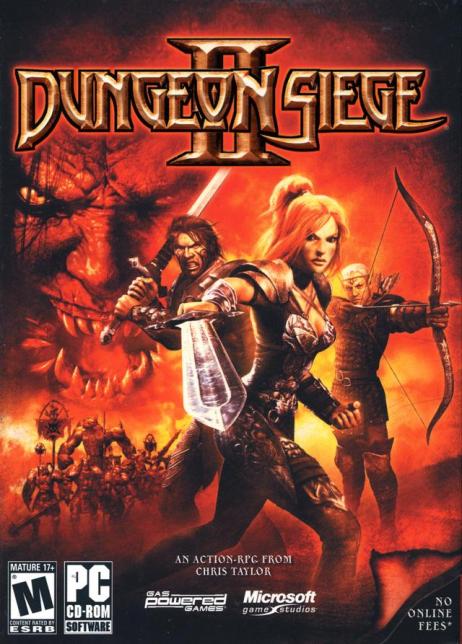Dungeon Siege II Review
-
Category: ReviewsHits: 25001

Article Index
Page 1 of 3
The original Dungeon Siege was fun for about a day. Then the lengthy caverns, the endless routes between towns, and above all, the repetitious gameplay and linearity began to take their toll on me. At some point I stopped, and no amount of add-ons or publicity would convince me to try it again. I prefer to sleep in a bed, thank you, rather than propped up before a computer. True, your mileage may have varied, but that was my take on it.The good news about DS2 is that Chris Taylor has taken criticisms about the original title very seriously. He's modified the game in a number of ways, and added some interesting features to this new release. The bad news, at least where I'm concerned, is that it's still not quite enough.
If you've played DS before and enjoyed it, you'll be pleased to know that the basics haven't changed. You still gather a party, whose attack abilities focus on four distinct combat sets: melee, ranged, combat magic, and nature magic. Each is improved with use, and will get a great deal of use, too, since DS is a hack-and-slash title that seldom throws one enemy at you at any time. As in both Diablo I/II and Sacred, they just crawl out of everywhere with no thought to strategy, and attempt to overwhelm you. The game lets you pause via the spacebar and issue orders to one party member, but if you switch to another, you'll quickly find your previous instructions ignored. Fortunately, the combat AI is, well, not dazzling in its brilliance, but decent enough to act intelligently. Usually.
The graphics are 3D and very attractive from a distance which is the only way you really succeed in combat, frankly but some animations, notably the basic movement of your party members, are repetitive and rather silly-looking when viewed up close. Your enemies are very varied in nature and described with vivid imagination in the manual, but in practice simply use the same basic four attack systems you already know. Kill them, and you acquire goodies: money and items, many of the latter possessing bonuses to everything from attack types to resistances. Gain experience, level up.but you know all that, right? Let's move on.
New and Improved
For starters, there's the new skills system. When one of your characters advance a level, they gain a skill point. This can be applied to any of a series of skills represented on a tree-like structure, very similar in concept to Diablo 2 (surprise, surprise). Skills add everything from the ability to shoot arrows farther to larger mana reserves. You can really tailor each character in your party through skills, producing a combat mage who excels in death magic, lightning, or fire, for instance.
There are also some skills that, acquired above certain quantities at various character levels, unlock (powers.) There are a number of these powers available to each class, and some are rather oddly distributed: why would ranged types acquire Silence, the magical ability to prevent enemies from casting spells for a time? On the other hand, many powers are just a delight to use and watch, such as Chain Lightning, Flurry, and Whirling Strike; despite the fact that the concepts were all clearly borrowed from other previously successful RPG titles. You'll find that most party members acquire several powers (and upgrade them to more powerful versions of themselves) during the game, but you can only have one available per party member from the screen interface at a time. After a power is used, it requires lengthy recharging. In the meantime you can't substitute another power that party member already has in reserve to use in the field, so don't even bother thinking that way. I'm ashamed of you.


